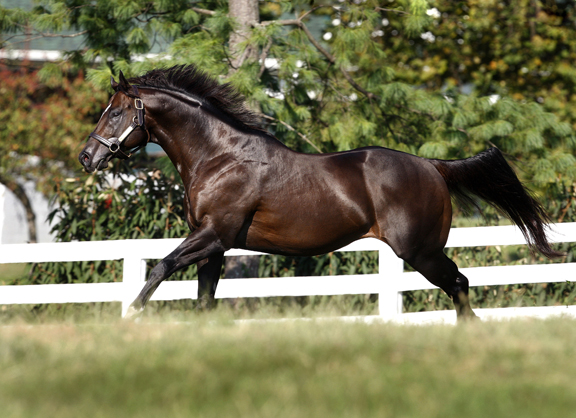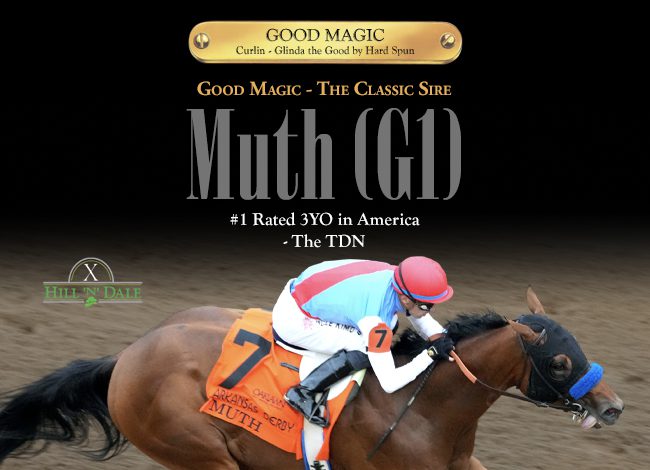By Chris McGrath
“Price is what you pay, value is what you get.” The axiom is routinely attributed to Warren Buffett, though credited by him to Ben Graham. But there is nothing like the bloodstock market to remind us that value is subjective–making the setting of a stallion's fee, the annual exercise that has occupied some of the most experienced minds in the business over recent weeks, an extremely delicate balancing act.
A mare owner's sense of value, after all, may itself be determined precisely by the ambitions implied in a fee. In a world where so many purchases will be recycled, and generarally sooner rather than later, a stallion's brand needs to be protected. Present a sire to market as a bargain, and you have to hope that he is welcomed as “commercial” rather than dismissed as “cheap”. On the other hand, you can't price him beyond that point where the customer thinks him fair value. As with all markets, then, it's a two-way street. Both sides need to be able to make sense of the deal.
Within any major farm, indeed, there will be people pulling in different directions. The marketing guys want the fee to be as attractive as possible; the accountants want it to be as high as it can be, without eroding book size.
“Setting a fee is an art, not a science,” reflects Dan Pride, chief operating officer of Darley America at Jonabell Farm–where they have an interesting annual ritual that not only gives their whole team a say, but allows those who make the ultimate decision to take a pulse, both informed and interested, beyond their own hopes and fears.
“Everyone who's responsible for selling seasons or marketing stallions has to sit around a table with a piece of paper and independently write down each stallion's name and what they think his fee should be,” Pride explains. “Then we go back and forth debating before making a recommendation. We do try to make it a communal effort, so that people have a chance internally to voice an opinion.”
Obviously the critical fee, for any stallion, tends to be the one at which he starts. In many cases, he will never again command one so high, just because it is statistically inevitable that most sires will not make the grade. But some farms are at particular pains to avoid having to take evasive action during the notoriously difficult third and fourth seasons, when breeders tend to reserve judgement on first yearlings, and then first runners.
“It's a fine line,” says Bernie Sams, seasons and bloodstock manager at Claiborne Farm. “But obviously if you get it wrong, and have to drop one, it's not good. If you're going to be wrong, you're better off being wrong low–and then be able to pick and choose through the mares. If you get it wrong high, and have to drop, then people run scared.
“The first couple of years probably we're going to be on the lower side of where some other places may be. But then if we're able to maintain for the third and fourth years, it evens out when you don't have to change the fees. That is key to us. The guy who paid $25,000 the first two years doesn't have very good taste in his mouth if you've meanwhile dropped to $15,000. And won't be as quick to come back.”
One good example of thinking that way was Dialed In (Mineshaft) at Darby Dan. “He could easily have started higher than $7,500,” says Robert Hammond, the farm's vice-chairman. “But you try to start them off at a price that gives people a chance to make their profit and to have a good experience. There are some farms you see that pitch their new sires as high as possible–but that does potentially expose their clients to a bad experience.”
Sure enough, after his first runners walked the walk, Dialed In's fee was doubled and he has since advanced to $25,000. Darby Dan, of course, is also one of many farms nowadays to offer a variety of incentive schemes to patrons. And sometimes programs of this kind make the formal stud fee relatively academic, little more than a market peg.
“We have tried to create a synergistic relationship with our breeders,” explains Elliott Walden, president and CEO of WinStar, who reckons the farm has given away $3 million in stallion rewards over the past three years. “We've done that to incentivize breeders who had success with our stallions, to reward them for a job well done–and to get them continuing to breed at WinStar. It has been huge for the little breeder. We have clients who have been able to upgrade their whole program: instead of breeding to $10,000 horses, they are now breeding to $50,000 horses. And you never know where that takes someone, down the road.”
The one solecism that absolutely must be avoided, according to Sams, is to repent of an ambitious fee once it has been set. “You do that, you're in trouble,” he says. “You start a horse too high, and nobody goes to him, and you have to drop the fee within a month or two? Then you're behind the eight-ball from the very beginning. Then you have to go out and start hustling people, and that's the last thing you want to do.”
That is consistent with a preference for trying to err on the side of generosity. Needless to say, however, once a young stallion's stock has proceeded through market reception to racetrack performance, then every farm has to sit down and take a fresh look at the road he appears to be traveling.
“Essentially when they retire you've got three variables: pedigree, race record and conformation,” says Pride. “And you're trying to look at the relative value of those three variables, compared to what you're going to compete against–both on your own roster, and in the general market where you're standing the horse. But once you have runners of racing age, and that fourth element of performance, you're still looking at where each horse slots in relation to its competition. You always try to have a feel for what we call the right side of price.
“It's a subjective mindset, but you try to make sure that if people are interested in your stallion, the price is really the last thing they consider instead of the first. That they go through the other aspects of the horse, and how he fits the mare, and then hope the price lines up with that.”
And it's a moving target. As Pride remarks, you're having a discussion in November about the value of matings that won't begin until February. Between setting fees and the end of the covering season, there are many big races that can affect a stallion's profile, for richer, for poorer. That is especially true of a young stallion with one or two early flag-bearers coming through.
The overall temper of the market can change prejudices, too. Walden notes that breeders took sanctuary in proven sires after the recession in 2008, but that the bull run since has prompted a return to “home-run” speculation in new sires.
Then there are the ups and downs in the fortunes of a particular stallion. Off the record, the director of one major farm cited an example of an elite sire who had hit a flat spot in his career. For where he found himself now, his fee should strictly have been halved. But the fear was that an associated air of panic would have the reverse of the desired effect, so he was given a conservative trim and is now treading water.
At Claiborne, however, they had the courage to take exactly that drastic action with Blame (Arch)–slashing his fee for last season from $25,000 to $12,500. Given that he had just sired a Classic winner in Europe, it was not as though he was wholly lacking momentum. Sure enough, those who were tempted by the new fee (taking his book up to 112 from 48) were delighted to see him enjoy a stellar campaign this year, earning elevation past his old fee to $30,000.
“They always have dips,” says Sams. “You take War Front. He went 12.5, 12.5, 10, and probably we did deals the third year and didn't bring a lot of mares. With Blame, last year was at struggle at 25. So at the end of the year we cut him in half, and it worked. And then they started running. So it worked both ways. And now I've a long list of people want to breed to the horse at 30 next year. But saying that, if you went to 40, would you have the same ability to pick and choose through mares?”
War Front has earned his stripes all the way to $250,000, and it was a similar story with Tapit at Gainesway: clipped to $12,500 from an opening $15,000 by the time his stock ventured into public and began moving himself to the stratosphere. At WinStar, equally, Walden can point to Distorted Humor, now in the evening of his career but at one point able to multiply his second-year fee of $10,000 by a factor of 30.
“All these horses were just given an opportunity,” Walden says. “They weren't given a silver spoon in their mouth. They earned it. So, you've got to price them where they get an opportunity. You have to adjust sometimes. You just have to pay attention to your market and adapt, depending upon supply and demand. That's really the driver, like anything else in this country. Because if stallions don't get opportunities, they can't prove themselves. That's the bottom line.
“So typically, when you sit down and evaluate where a horse is in his career, you have to think in terms of a partnership with your breeders. Because if you try to look at it singularly, just for the stallion owner or the shareholder, then you're going to leave your breeders behind.
“There has to be a balance. There's a tremendous life cycle to this business. If one entity tries to get too far out, it doesn't work. The worst thing that can happen is for Grade I winners to become too cheap to buy, from a stallion perspective. Racehorse owners need to be compensated for their stallion prospects. It all kind of works in unison. You have to marry the breeders' needs, and their ability to make a profit, and your own need to make a profit. So you try to set the fee right down the middle.”
In the end, that comes down to instinct. If your client's view of value is subjective, then it's a case of making a call based on experience. Farms know how their clients think. And everyone knows how stallions can fail, with the world at their feet; or equally rise to stardom from nowhere.
“Walker [Hancock] and Seth [Hancock] and I will talk about it over a period of time but really you've got a pretty good idea where you want to be,” says Sams with a shrug. “It's not brain surgery. Really it's not.”
Not a subscriber? Click here to sign up for the daily PDF or alerts.






